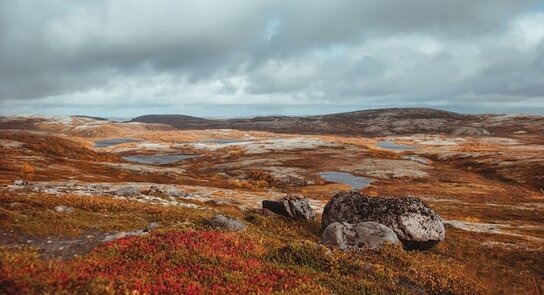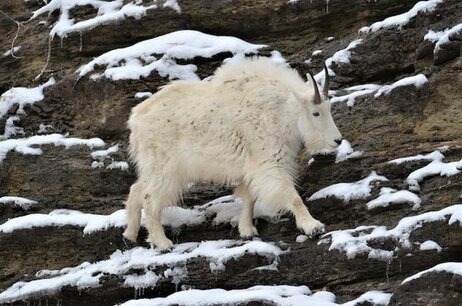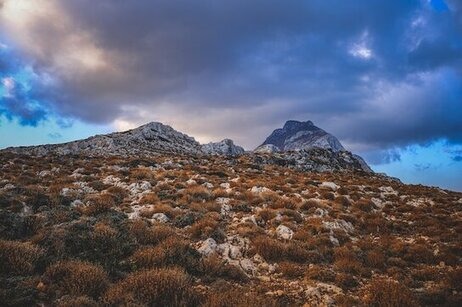Today we will discuss one of the largest biomes in the world called the tundra biome.
Our world consists of various regions, each characterized by distinct features. Some areas are adorned with vibrant green grass, while others are dominated by vast golden deserts. These diverse environments host a multitude of plants and animals, collectively forming natural communities known as biomes. Among these biomes, the tundra stands out as a unique habitat.
The tundra biome is among the world’s coldest and heaviest biomes on Earth. It is identified by extremely cold temperatures, little precipitation, and treeless landscapes.
Interesting information regarding the tundra biome
| # The word “tundra” came from the Finnish word ‘tunturia’. It’s meaning treeless hill. # More than 1,700 different plants are found in the tundra region. # In the tundra, 48 different species of land animals have been found. # Twenty percent of the area on Earth is covered by tundra. # The permafrost can extend nearly 1,500 feet under the ground. # Most of the world’s tundras are found in the continents of Antarctica, North America, Northern Europe, and Northern Asia. # The summer in the tundra can last as little as six weeks. # In the summer, there are 24 hours of daylight each day. # The highest summer temperatures reach about 10 degrees Celsius. # Temperatures can go as low as minus 45.56 degrees Celsius in winter. # The largest creatures that can be found in the tundra are polar bears. # The kea is the only parrot living in a tundra. # There is just a two-month growing season in the tundra. |

How do we exactly identify a tundra region?
The word “tundra” came from the Finnish word ‘tunturia’. It’s meaning treeless hill. There are definite features that tundra regions have. The absence of trees and the vegetation’s predominance of low-growing plants including mosses, lichens, grasses, and dwarf shrubs are two distinguishing characteristics. The existence of permafrost, a permanently frozen layer of soil beneath the surface, is another identifying characteristic. Tundra regions have permanently frozen ground, which frequently creates wetlands and small lakes. Along with the presence of classic arctic animals like reindeer and musk oxen, the harsh environment of long, cold winters and brief, chilly summers also aids in the identification of these particular and delicate ecosystems.
Environmental conditions of the tundra biome
Climate
The climate of the tundra biome is extremely cold, with long, harsh winters and brief, cool summers. High latitudes, primarily in the Arctic, are where it is found. In the tundra, average temperatures hardly ever climb above freezing, and winters can be extremely chilly, frequently falling well below -30°C (-22°F). The summers are relatively short. And temperatures remain 3°C to 12°C (37°F to 54°F). Strong winds also have an impact on the climate since they can have a cooling effect and make the climate harsher overall. These harsh weather conditions present substantial problems for both plant and animal life.
Soils
The soils of the tundra biome are frequently thin and nutrient-poor. Because permafrost, a layer of continuously frozen ground, predominates. Since their roots can’t penetrate the permafrost to reach deeper soil layers, plants have trouble growing. As a result, plant development in the tundra biome is constrained, and low-lying shrubs, and grasses. Which are adapted to challenging growing conditions—constitute the predominant vegetation. in the summer, the permafrost layer slowly thaws, allowing for a thin active layer of soil where some plant development takes place. Lack of appropriate drainage has a tendency to cause this layer to become saturated, which results in the development of tiny, shallow marshes and ponds. The frozen nature of the soil in the tundra biome plays a crucial role in shaping the unique ecosystem and limiting the diversity and productivity of plant and animal life.
Types of the tundra biome
Arctic tundra and alpine tundra are the two main subtypes of the tundra biome.
Arctic tundra
In the far north of North America, Europe, and Asia, Arctic tundra is the most prevalent form of tundra biome. It has a somewhat brief growing season and exceptionally frigid temperatures. Mosses, lichens, dwarf shrubs, and grasses make up the majority of the Arctic tundra’s vegetation. Permafrost blankets the ground, and lakes, ponds, and wetlands dot the surrounding countryside.
Alpine tundra
Alpine tundra is located at high heights, often above treelines, in mountainous areas around the world. It is similar to the Arctic tundra in many aspects. The Alpine tundra has lower temperatures due to its higher elevation. And its plant has developed to tolerate its harsh, windy climate. It is composed of hardy grasses, small shrubs, and cushion plants that can withstand the alpine climate.
Location
The tundra biome is found all throughout the world. It is more frequent in the Northern Hemisphere’s high latitudes. Arctic tundra extends to northern Alaska, Canada, Greenland, Scandinavia, and northern Russia. The Antarctic Peninsula has tundra. We found the alpine tundra in high-elevation mountain areas. Subarctic tundra can be identified in Alaska, Canada, Siberia, and Scandinavia south of the Arctic Circle. Other sites with tundra-like characteristics include South America’s Patagonia, Iceland’s highlands, and certain high-altitude areas in New Zealand. Cold temperatures, little vegetation, and unique adaptations for life in severe conditions differentiate these distinct places.
Plants
Tundra means treeless area. Here plants struggle to survive in places of severe cold. The tundra region contains almost 1,700 distinct plant species. Tundra plants are often low-growing and well-adapted to severe and freezing climates. Mosses, lichens, shrubs, and grasses are examples of common tundra flora. Arctic willow, dwarf willow, arctic poppy, cottongrass, and bearberry are all examples of tundra plant species. Plants adapt some techniques to survive in this ecosystem.

Animals of the Tundra Biome
The tundra is home to around 48 species of terrestrial animals. The Arctic fox, with its hair that blends into its surroundings, and the polar bear, which is well adapted for hunting on sea ice, are iconic animals. In quest of food, caribou, usually referred to as reindeer, make remarkable migrations over the tundra. Muskoxen move across the chilly landscape with the help of their thick fur and aggressive defense mechanisms. In the summer, migrating birds like snow geese and Arctic terns breed in the tundra. And lemmings and voles provide significant prey for predators. These creatures have adapted to the tundra’s intense cold, fierce winds, and lengthy winters by evolving thick fur coats, unique digestion systems, and migration patterns.
Impacts of technology over tundra biome
The tundra biome has benefited greatly from technology. Modern research tools like remote sensing and satellite photos have improved scientists’ ability to study and monitor this delicate environment. Understanding the effects of climate change, keeping an eye on wildlife numbers, and developing conservation plans are all made easier with this knowledge. The use of fossil fuels has decreased thanks to technological developments in renewable energy and sustainable infrastructure, which have minimized the impact on the environment and encouraged the preservation of this rare ecosystem.
FAQs.
The tundra biome is a massive, frozen, and treeless ecosystem characterized by cold temperatures, permafrost, and a limited growing season.
There are definite features that tundra regions have. The absence of trees and the vegetation’s predominance of low-growing plants including mosses, lichens, grasses, and dwarf shrubs are two distinguishing characteristics.
In the tundra biome, there is a layer of ground that always remains frozen.
The climate of the tundra biome is extremely cold, with long, harsh winters and brief, cool summers.
Tundra plants are often low-growing and well-adapted to severe and freezing climates. Mosses, lichens, shrubs, and grasses are examples of common tundra flora. Arctic willow, dwarf willow, arctic poppy, cottongrass, and bearberry are all examples of tundra plant species.
